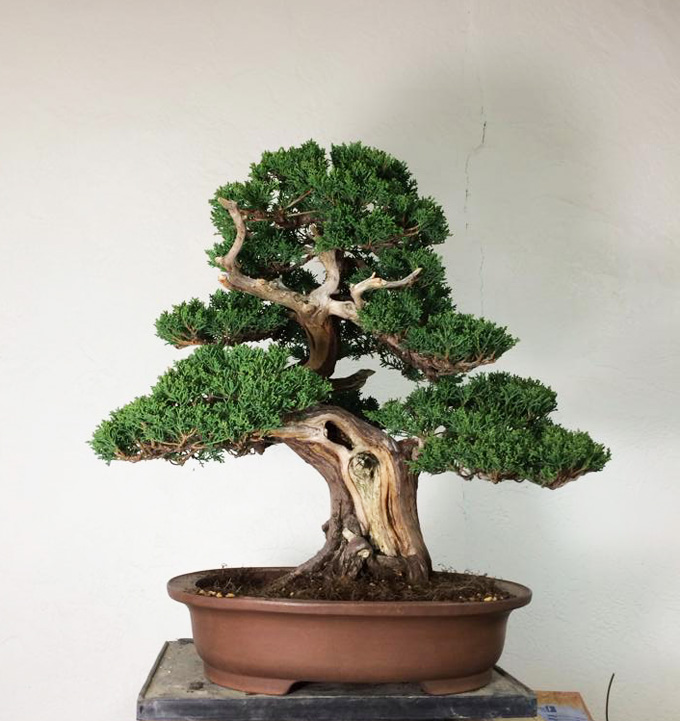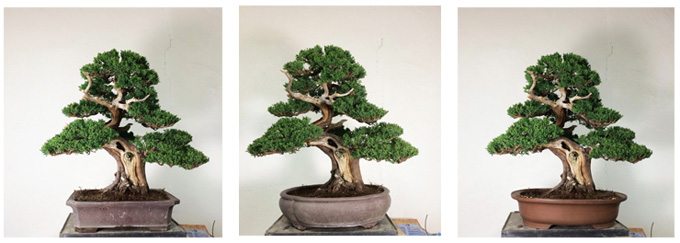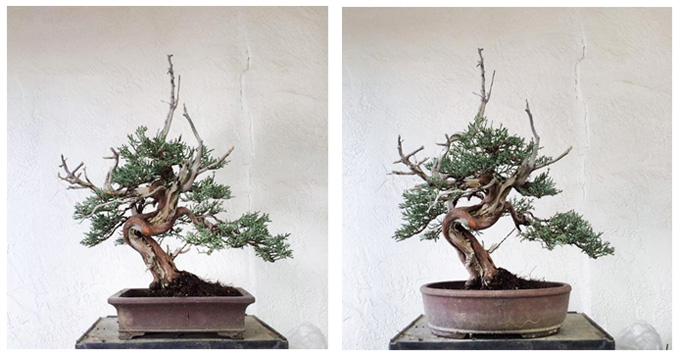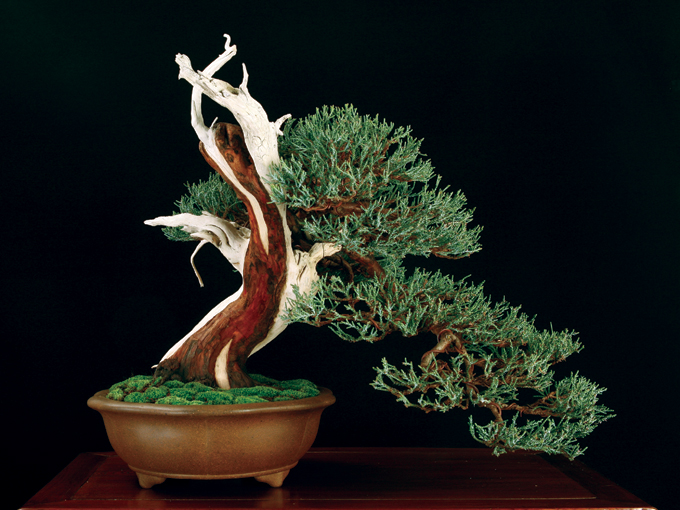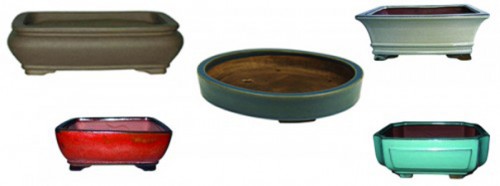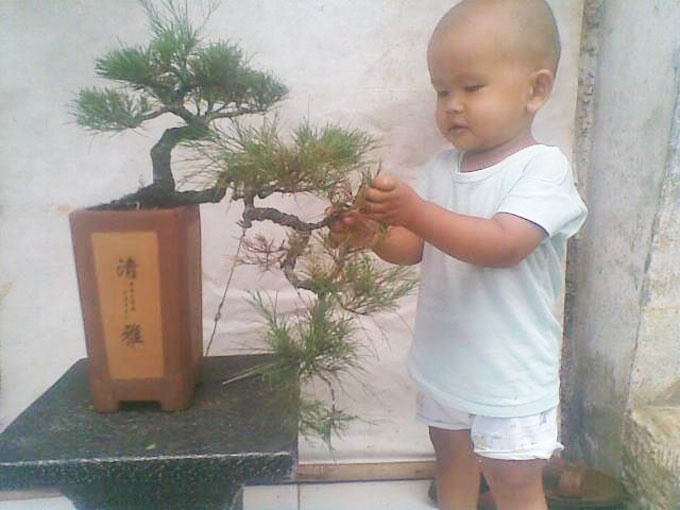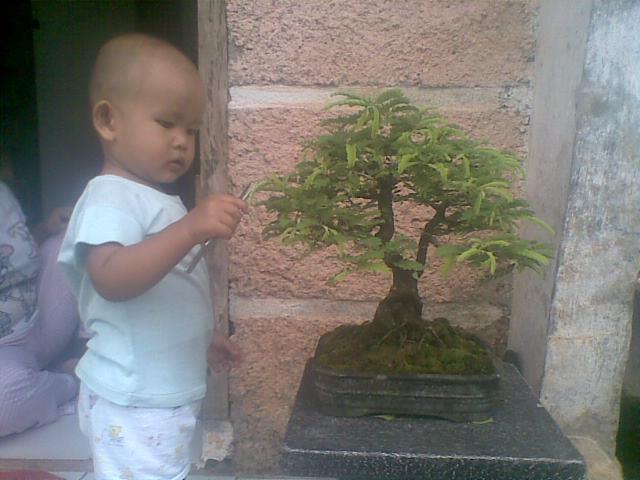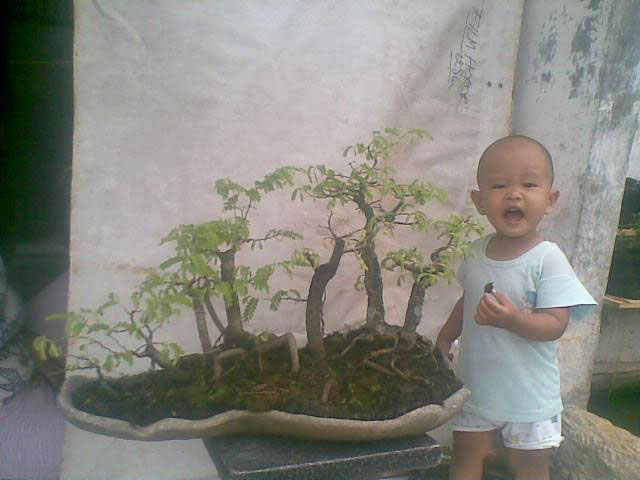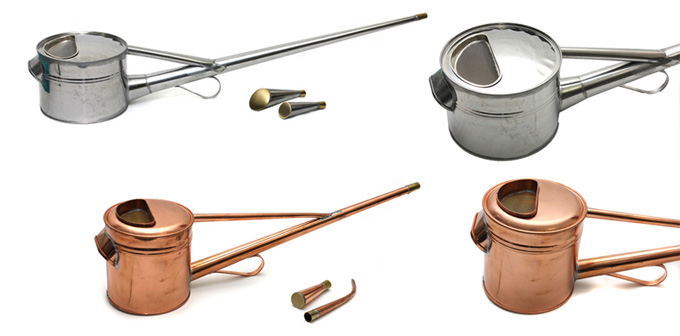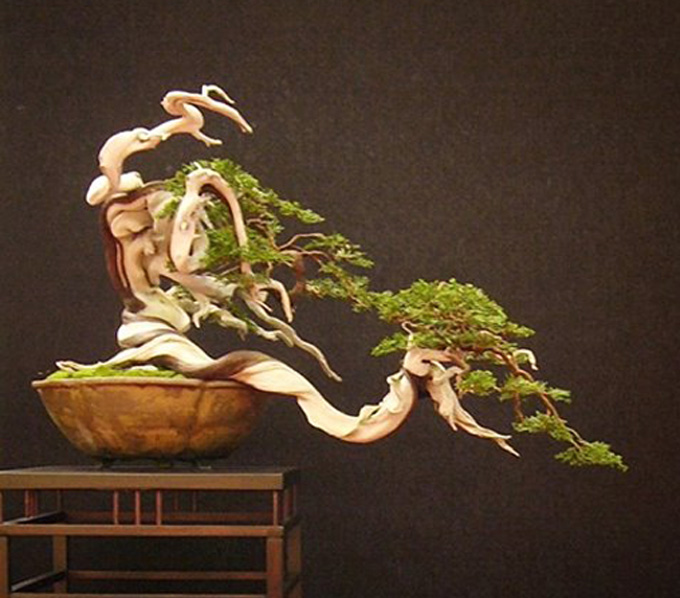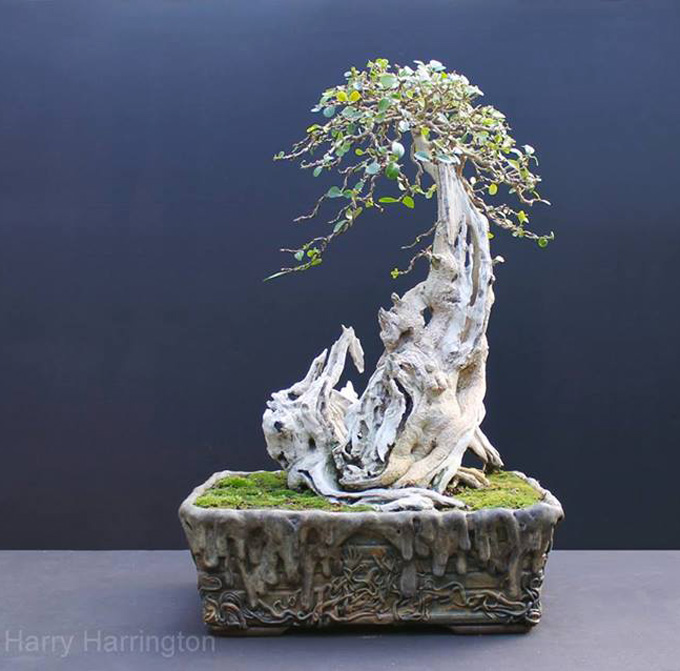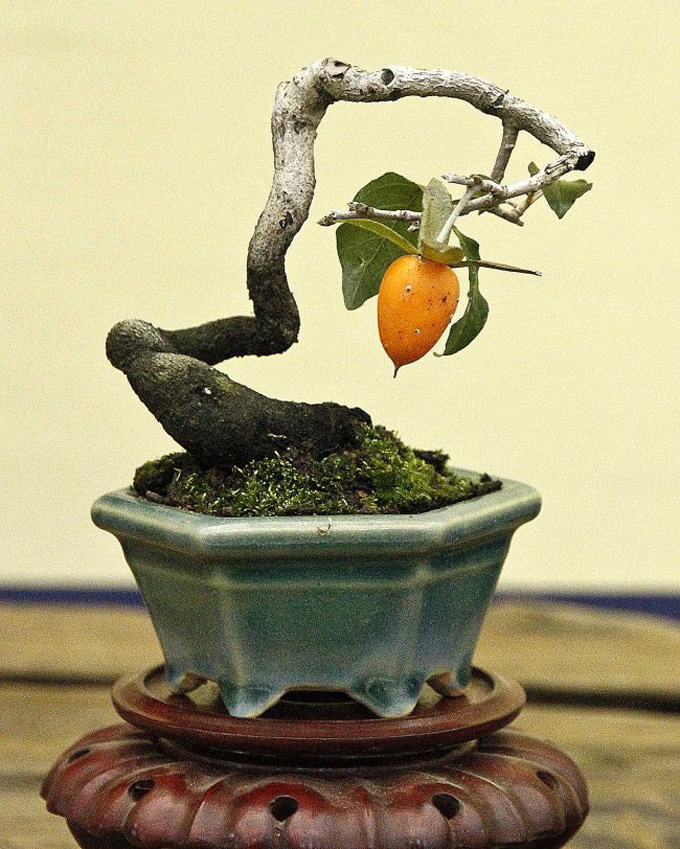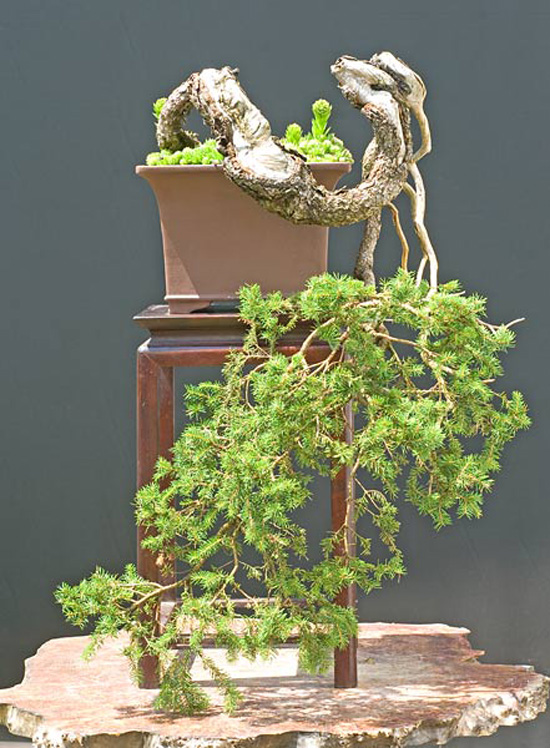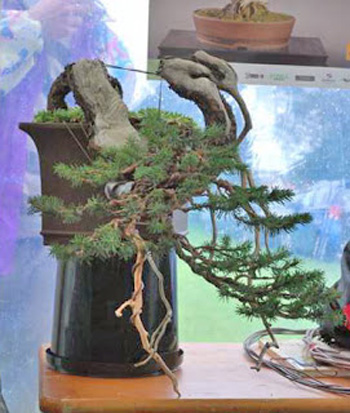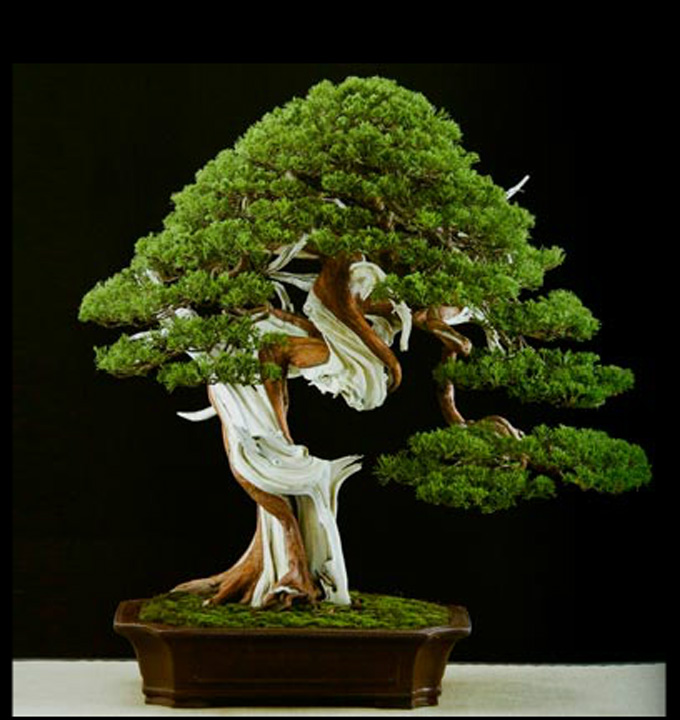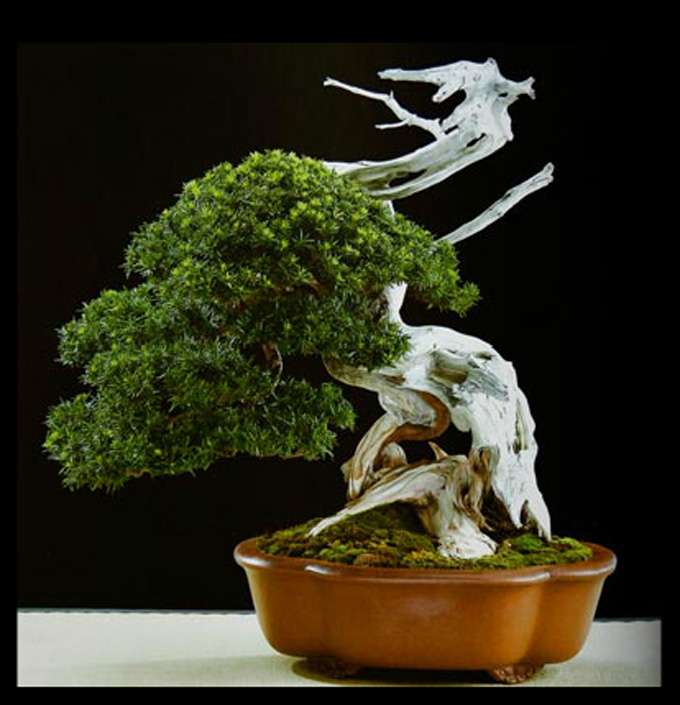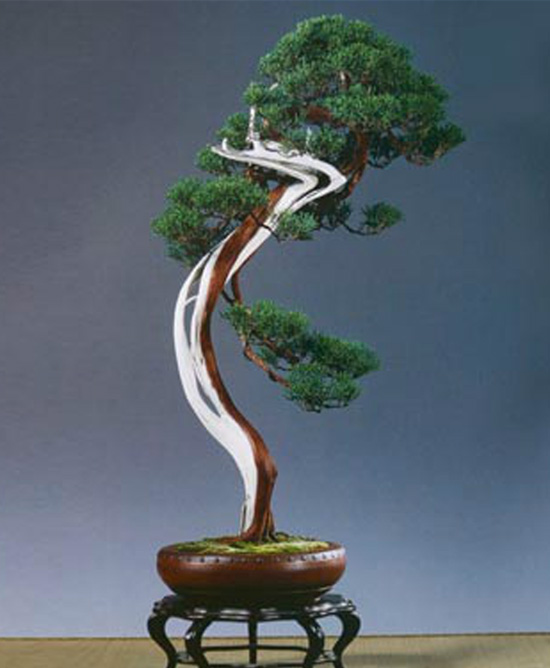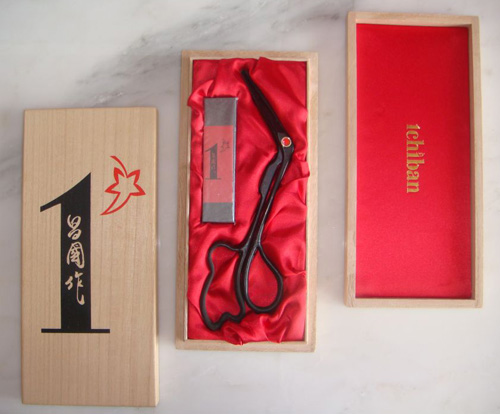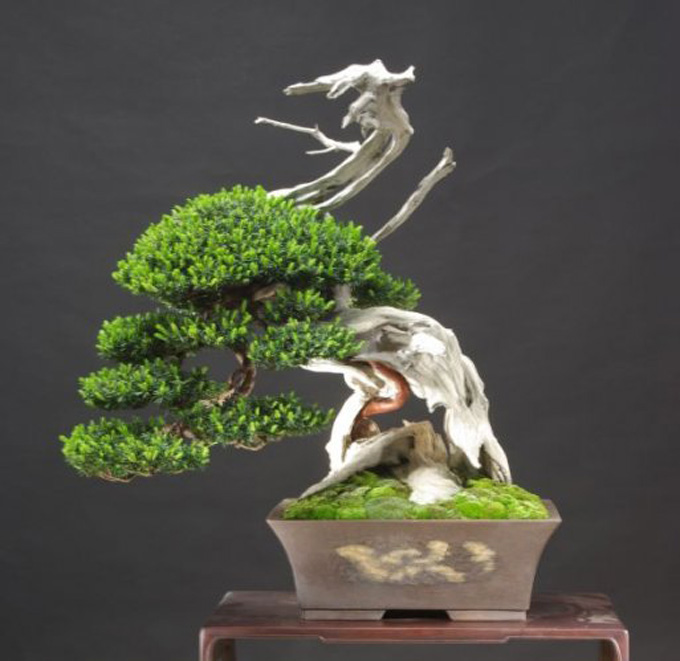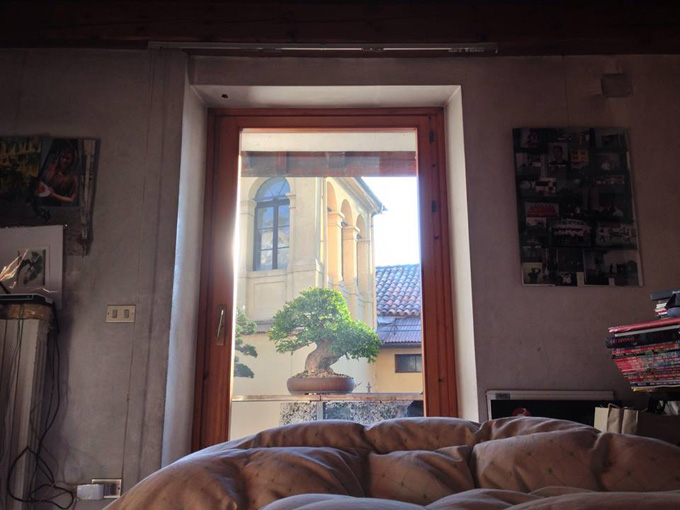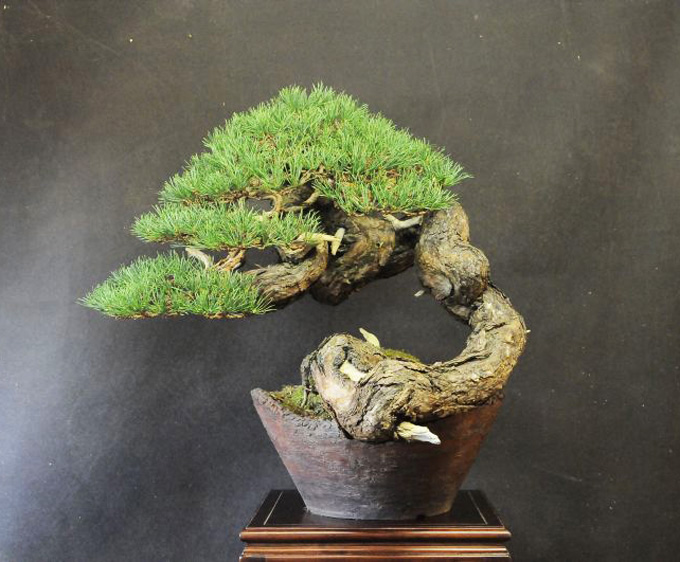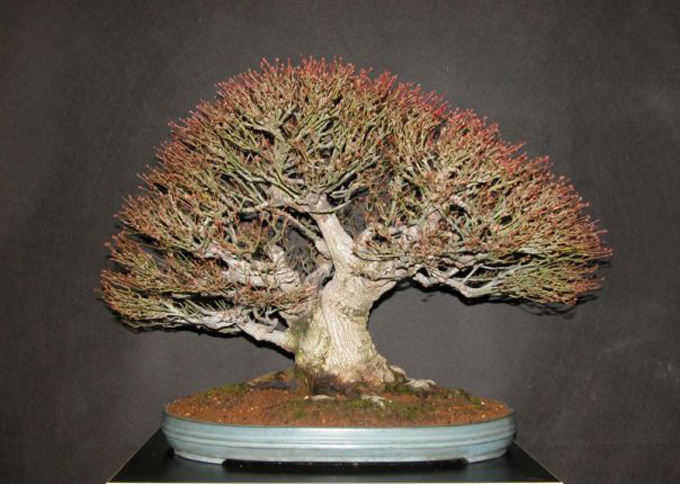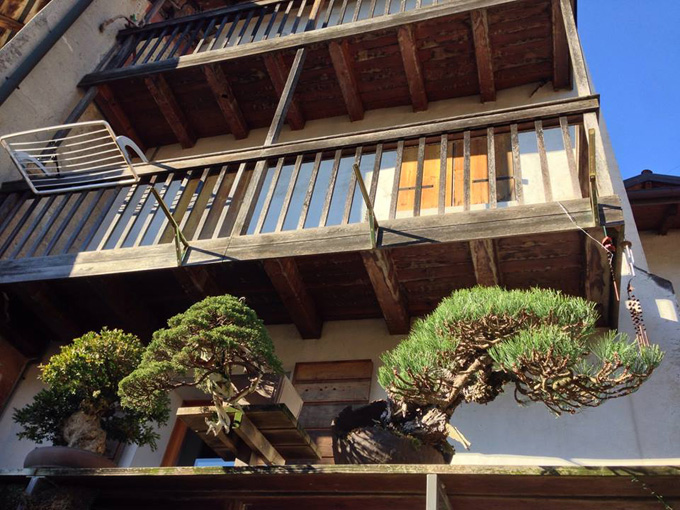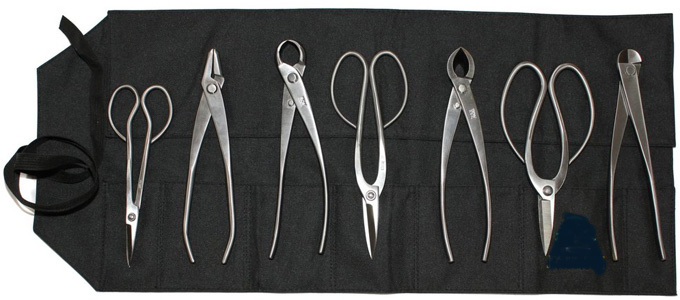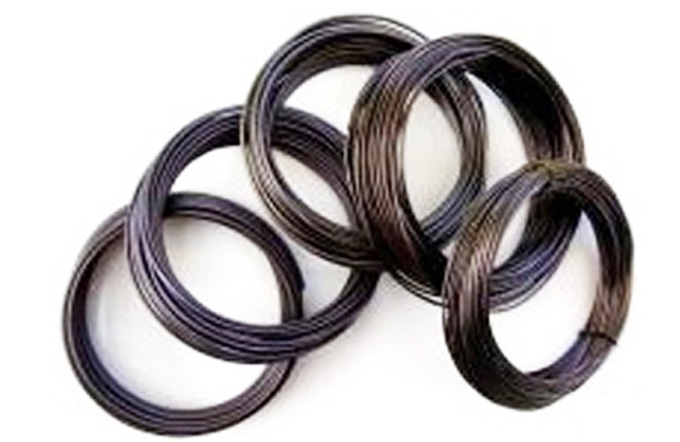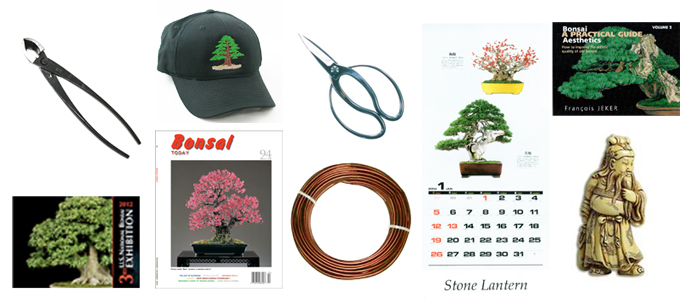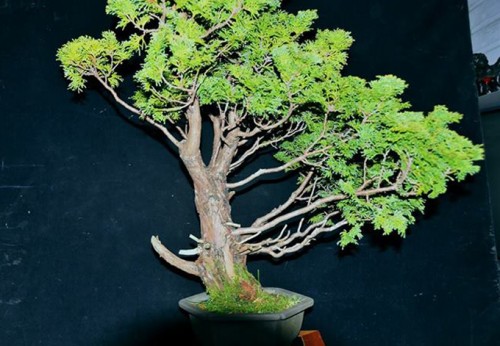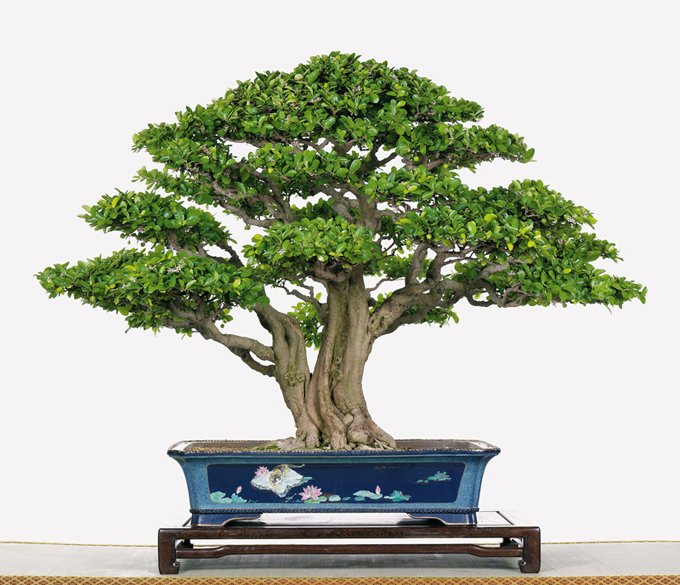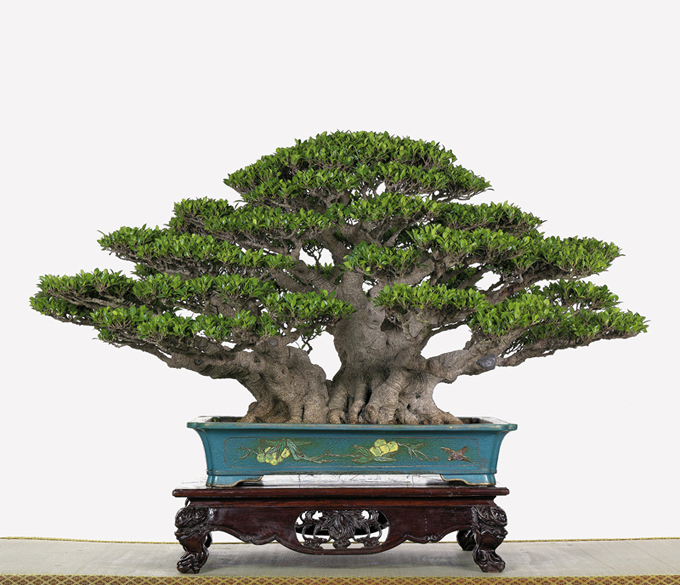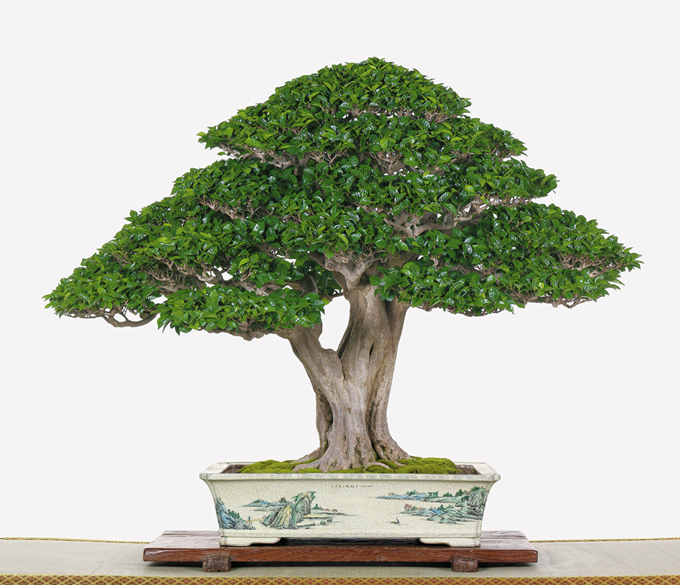 A fantastic, delightful and very unusual tree. I’ve seen about a million bonsai (photos actually), but never one quite like this. It belongs to Nacho Marin (he’s been here before). This photo and the one immediately below are from facebook. No name provided there, but fortunately, the third photo from his website comes with a name (I won’t spoil it for you).
A fantastic, delightful and very unusual tree. I’ve seen about a million bonsai (photos actually), but never one quite like this. It belongs to Nacho Marin (he’s been here before). This photo and the one immediately below are from facebook. No name provided there, but fortunately, the third photo from his website comes with a name (I won’t spoil it for you).
I’ve been following Nacho Marin for a while now. Mostly on facebook, but occasionally I visit his website (it’s great, but you need some patience). Anyway, I think Nacho’s bonsai are some of the most fascinating and unique trees around and this one is no exception.
 Close up. A good shot of the deeply furrowed bark and the little cave dwellers peeking out of the sabamiki (hollow).
Close up. A good shot of the deeply furrowed bark and the little cave dwellers peeking out of the sabamiki (hollow).
 This photo from Nacho’s website begs the question: is this an earlier iteration of the same tree? I’ll let you decide, but the photo comes with an answer to another question: it’s a Callistemon Speciosus (Albany bottlebrush, Swamp bottlebrush, Grey bottlebrush… common names sometimes do this).
This photo from Nacho’s website begs the question: is this an earlier iteration of the same tree? I’ll let you decide, but the photo comes with an answer to another question: it’s a Callistemon Speciosus (Albany bottlebrush, Swamp bottlebrush, Grey bottlebrush… common names sometimes do this).
